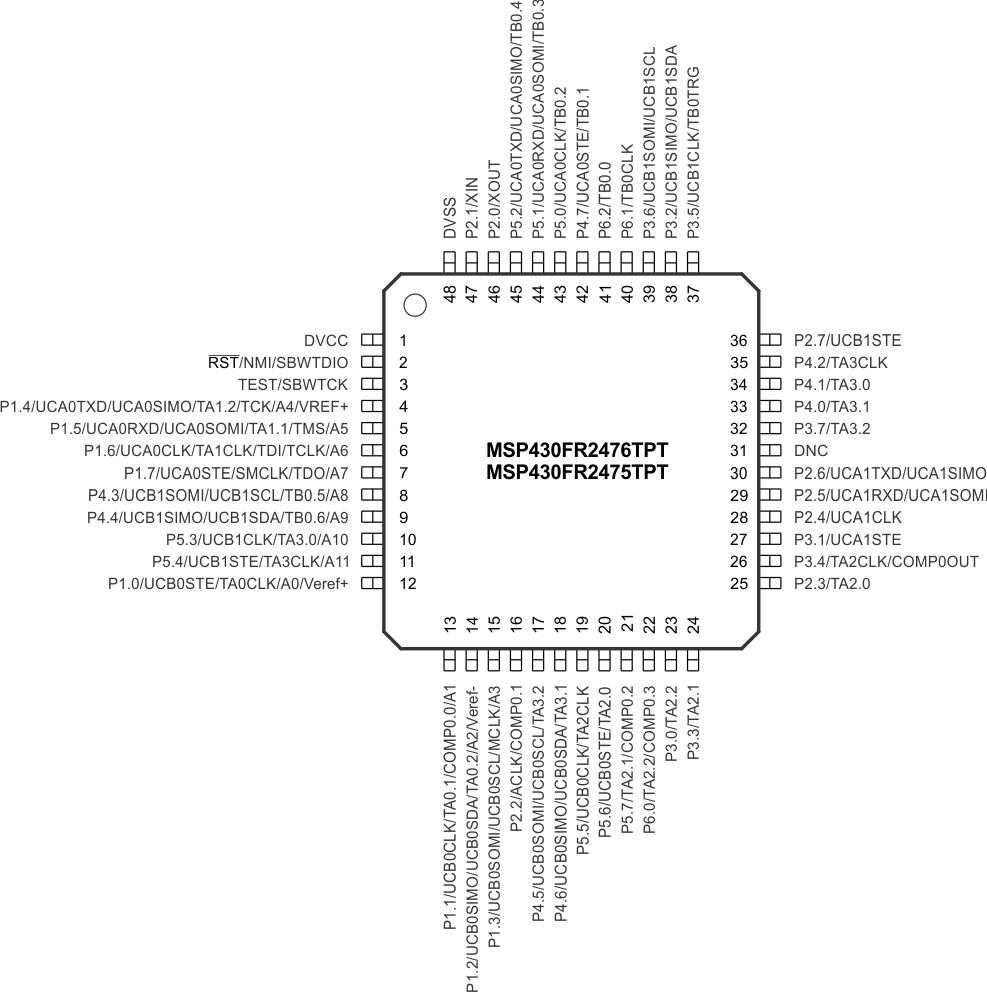SLAU802 March 2019
-
MSP430FR2476 LaunchPad™ Development Kit (LP‑MSP430FR2476)
- Trademarks
- 1 Getting Started
- 2 Hardware
- 3 Software Examples
- 4 Resources
- 5 FAQ
- 6 Schematics
2.2.1 MSP430FR2476 MCU
The MSP430FR2476 is an ultra-low-power MSP430FRx FRAM-based microcontroller (MCU), which offer extended data logging and security capabilities. The MSP430FR2476 offers the small LQFP package (7 mm × 7 mm) in the FRAM microcontroller portfolio, combined with a variety of integrated peripherals and ultra-low power consumption. FRAM is a cutting edge memory technology, combining the best features of flash and RAM into one nonvolatile memory. For more information on FRAM, visit www.ti.com/fram.
Device features include:
- 1.8-V to 3.6-V operation
- 16-bit RISC architecture up to 16-MHz system clock and 8-MHz FRAM access
- 64KB of program FRAM, 512 bytes of information FRAM, and 8KB of RAM
- 12-channel 12-bit ADC
- One enhanced comparator with integrated 6-bit DAC as reference voltage
- Four 16-bit timers with three capture/compare registers (Timer_B3)
- One 16-bit timer with seven capture/compare registers (Timer_B7)
- One 16-bit counter-only RTC
- 16-bit cyclic redundancy check (CRC)
- 43 GPIOs
 Figure 4. MSP430FR2476 Pinout
Figure 4. MSP430FR2476 Pinout